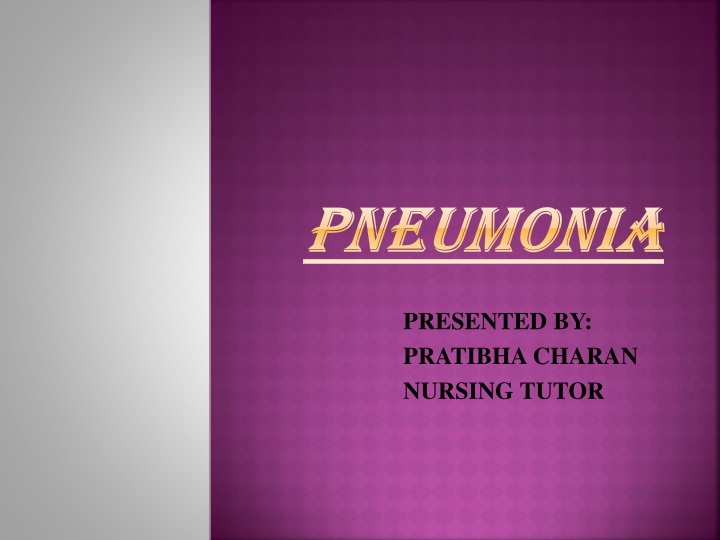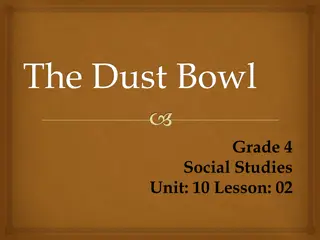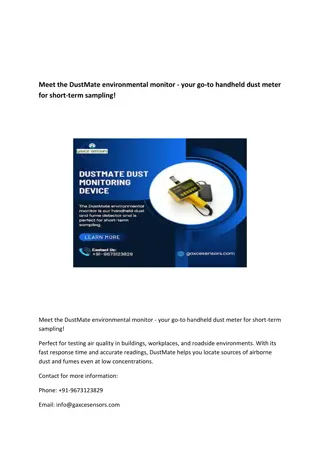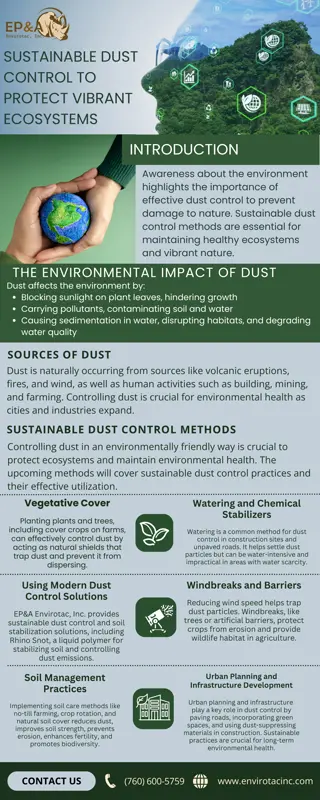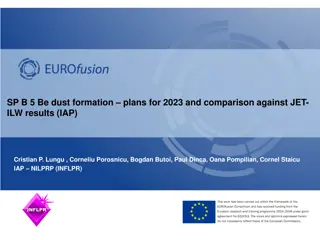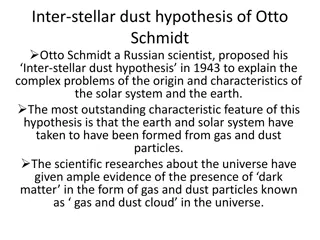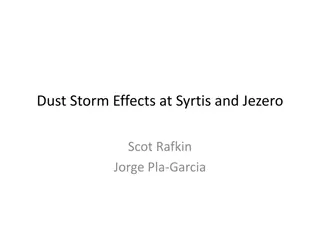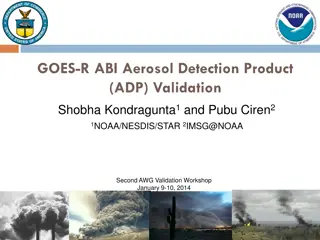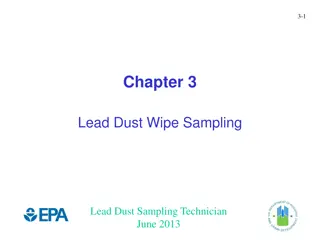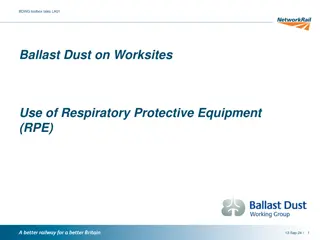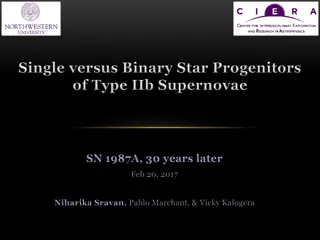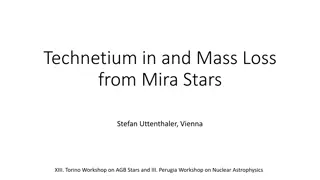Dust Composition Analysis in Low-Mass Post-AGB Star
V4334 Sgr, a low-mass post-AGB star, has been forming dust since 1996. Studies using Spitzer spectra and laboratory data suggest potential compositions including PAHs, SiC, carbonates, and melilite. The presence of these materials is analyzed through absorption features near 6 µm and 12 µm, with implications for the nature of the dust in this unique stellar environment.
Download Presentation

Please find below an Image/Link to download the presentation.
The content on the website is provided AS IS for your information and personal use only. It may not be sold, licensed, or shared on other websites without obtaining consent from the author.If you encounter any issues during the download, it is possible that the publisher has removed the file from their server.
You are allowed to download the files provided on this website for personal or commercial use, subject to the condition that they are used lawfully. All files are the property of their respective owners.
The content on the website is provided AS IS for your information and personal use only. It may not be sold, licensed, or shared on other websites without obtaining consent from the author.
E N D
Presentation Transcript
PNEUMONIA PNEUMONIA PRESENTED BY: PRATIBHA CHARAN NURSING TUTOR
INTRODUCTION INTRODUCTION It is an inflammatory condition of the lung that is caused by a microbial agent. Pneumonitis is a general term that describes an inflammatory process in the lung tissue that may predispose a patient to or place a patient at risk for microbial invasion. It is the leading cause of death from the infectious disease.
DEFINITION An inflammation of the lung parenchyma is known as pneumonia. Pneumonia is mainly caused by microorganism which enter the lower respiratory system and cause infection. The microorganism includes bacteria, fungi, parasites and viruses.
EPIDEMIOLOGY EPIDEMIOLOGY Common illness affecting approximately 450 million people a year occuring in all part of the world, 4 million death yearly. Rates are greater in children less than five years and adult older than 75 years. It occurs five times more in the developing world than in the developed world.
ETIOLOGY There are many causes of pneumonia including bacteria, viruses, fungal agent and protozoa. It may also result from - Inhalation of toxic agents - Smoke - Dust - Aspiration of food - Fluid - vomitus
TYPES OF PNEUMONIA Based on anatomical classification -Lobar pneumonia- affecting the whole of one lobe. -Bronchopneumonia- affecting the lobules and bronchi. o Based on Aetiological classification: - Community accquired pneumonia - Hospital accquired pneumonia - Aspiration pneumonia
MANAGEMENT Bronchodilators Antibiotics Antiviral drugs Anglesics antipyretics
SIGNS AND SYMPTOMS SIGNS AND SYMPTOMS Fever Chills Productive cough Shortness of breath Chest pain Hypoxemia Fatigue Tachypnea Hemoptysis Dyspnea tachypnea
DIAGNOSTIC EVALUATION History collection Physical examination Chest X-Ray Blood culture CT-Scan Bronchoscopy
